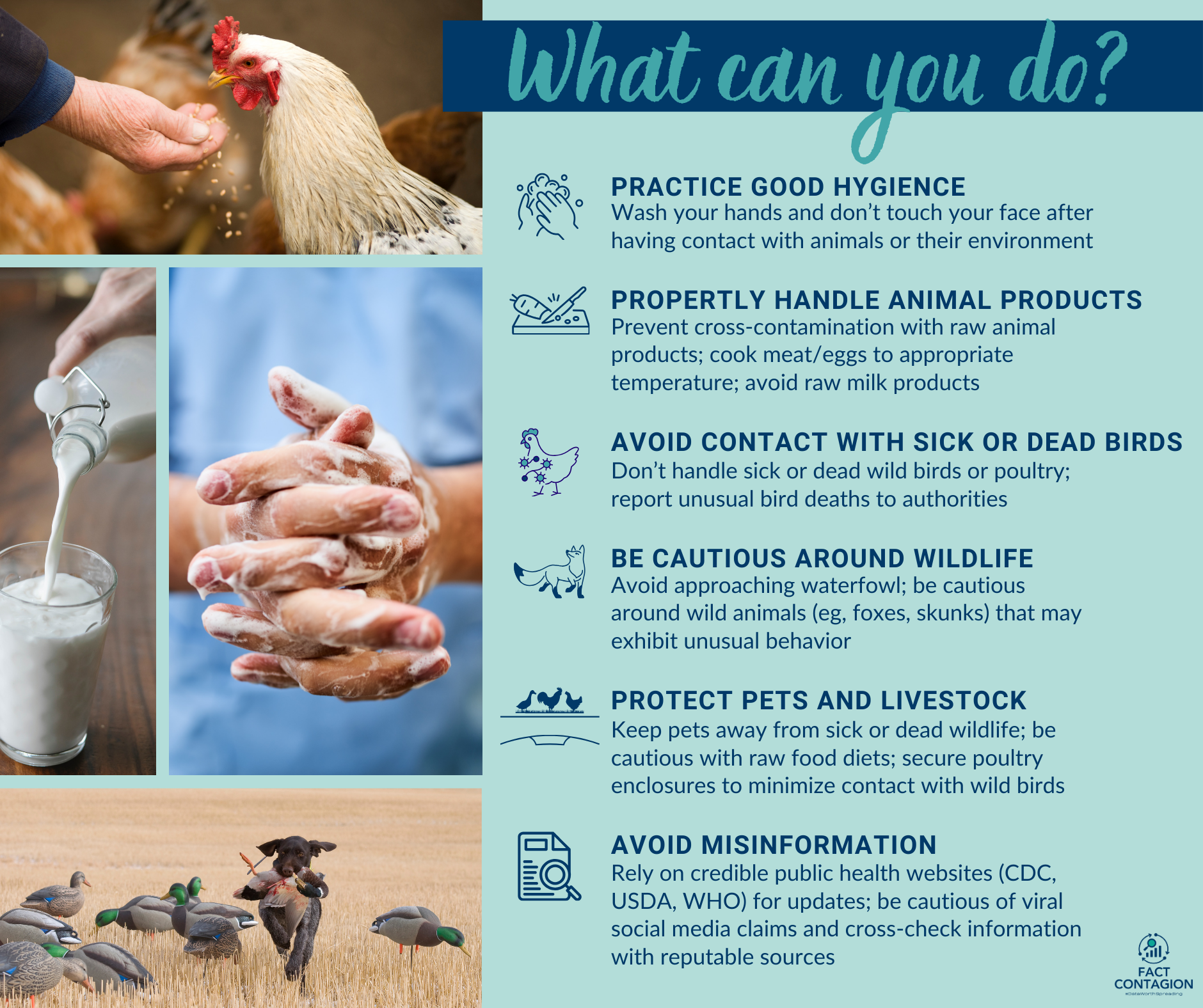Breaking down the current status of H5N1 avian flu in the US

Since first detected in North America in late 2021, the spread of H5N1 Clade 2.3.4.4b continues to raise new concerns. From wildlife to poultry, to now cattle, and two severe cases in humans, H5N1’s story in the US still unfolds.

Where We Stand Today
How highly pathogenic avian influenza (HPAI) H5N1 has affected the US since 2022:

Phylodynamics (genetic tree) of H5N1 in the US
H5N1’s Clade 2.3.4.4b isn’t just spreading, it’s evolving. Here’s a snapshot of its journey across the US. Multiple reassortment events have led to new genotypes, including D1.1 (responsible for two severe human cases) and B3.13 (dairy cattle outbreak). Wild birds remain key drivers, but cross-species spillovers to mammals are increasing.
Continued genomic surveillance is critical to guide early interventions and reduce risk of widespread transmission.

Infection Patterns across Humans, Cows, and Poultry
The below graphs chart human H5N1 cases by date of illness onset, and virus detection in dairy cows and poultry between Mar-Nov 2024. As reported in NEJM by Garg et al. Understanding infection patterns helps identify high-risk time periods and species, and improve both public health and agricultural safety.

H5N1 Adaptation to Humans and Vaccine Readiness
Public health risk remains low for now, but the genetic changes detected in the D1.1 genotype associated with severe cases in two people demonstrate the volatility of RNA virus evolution. The more the virus spreads, the more opportunities for reassortment. All it takes is a sequence of antigenic drifts or a significant antigenic shift for the virus to adapt to humans and enable human-to-human transmission.

Pandemic Preparedness
From biosecurity to transparency, every step counts in staying ahead of H5N1 in the US. Knowledge is key, so let’s stop the spread of misinformation and strengthen our defenses.

What Can You Do?
Simple actions can make a big difference in protecting yourself, your pets, and our communities from H5N1. From safe food handling to avoiding sick wildlife, being informed keeps you a step ahead. Prevention starts with awareness.

References and Additional Reading


